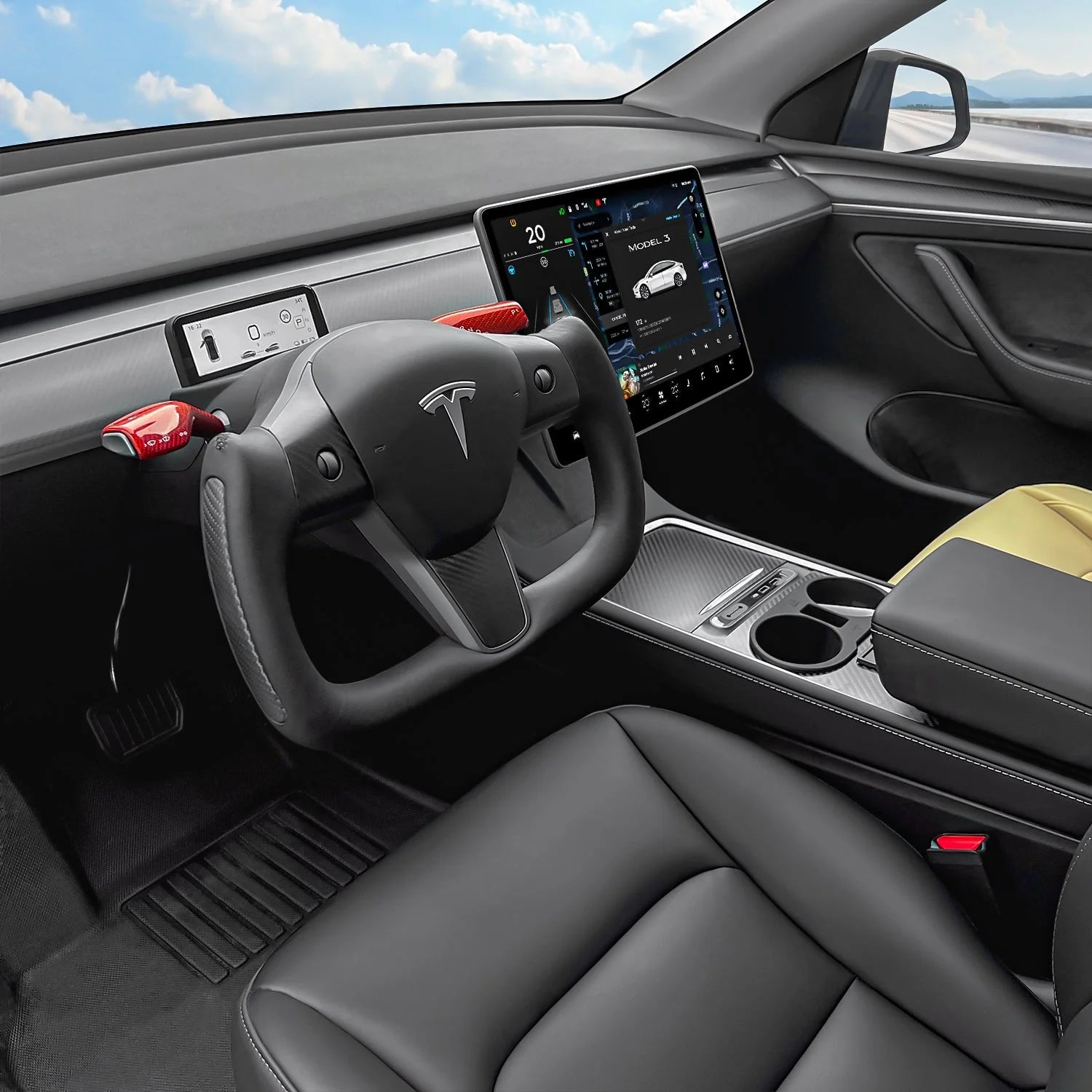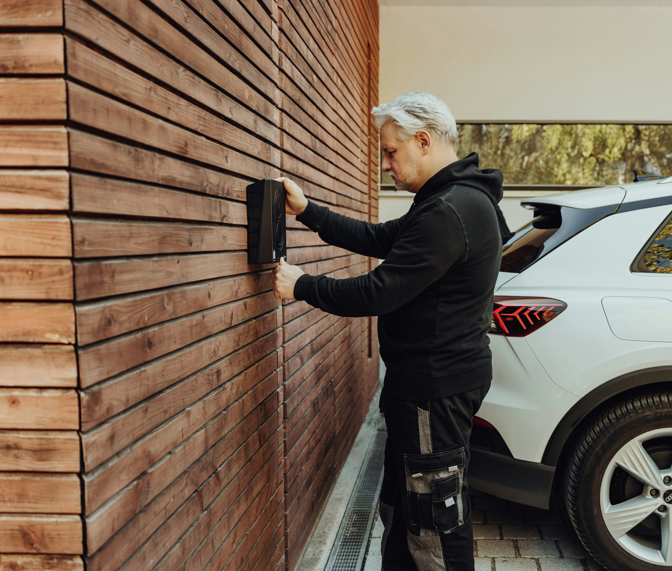La revolución de los vehículos eléctricos está cambiando la forma en que conducimos y Tesla es pionera en este aspecto. Es comprensible que, entre tantas opciones de carga y nuevas tecnologías, a menudo te sientas un poco confundido sobre cómo y cuándo debes cargar tu Tesla.
¿No sabes cómo asegurarte de que tu Tesla siempre tenga suficiente energía? Tanto si eres un nuevo usuario de un coche eléctrico como si estás intentando ponerte al día con las nuevas actualizaciones, este artículo es perfecto para ti. Te explicaremos todo, incluidos los conceptos básicos Carga de Tesla y los tipos de cargadores disponibles.
Así que, comencemos.
La revolución de los vehículos eléctricos en 2024
La revolución de los vehículos eléctricos no solo cambia la forma en que conducimos, sino también la forma de pensar sobre los automóviles y la movilidad. En 2024, los vehículos eléctricos serán sencillos y accesibles; una mejor tecnología, una mayor preocupación por el medio ambiente y la promoción de energías sostenibles coinciden con un cambio.
Ahora, los vehículos eléctricos pueden recorrer mayores distancias con una sola carga, se cargan más rápido y vienen en una amplia gama de modelos. Tesla lidera este cambio con la nueva tecnología y una amplia red de puntos de recarga. A medida que más personas eligen vehículos eléctricos, saber cómo cargar su Tesla correctamente es más importante que nunca.
Los conceptos básicos de la carga de Tesla
Cargar tu Tesla es una parte muy importante de tu propiedad.
Aquí tienes una guía sencilla que puede ayudarte:
- Opciones de carga: Es posible cargar su Tesla en casa usando el conector de pared, supercargadores, nivel 2 Cargadores Tesla en carreteras y centros comerciales, o prácticamente en cualquier lugar del país.
- Velocidad de carga: Los distintos cargadores recargan la batería a distintas velocidades. Algunos de ellos, como los supercargadores, son bastante rápidos y muy buenos para viajes largos, mientras que otros, como los Cargador Tesla En casa, son bastante lentos y muy ideales para recargar durante la noche.
- Costos de carga: El costo por carga depende de la estación: los supercargadores utilizan una tarifa por kilovatio-hora o por minuto, mientras que la carga doméstica de Tesla depende de su tarifa de electricidad.
Con estos conceptos básicos, estarás listo para mantener tu Tesla cargado y listo para funcionar.
¿Cuáles son los diferentes tipos de cargadores Tesla?
Para cargar tu Tesla es necesario utilizar distintos tipos de cargadores según dónde estés y la rapidez con la que necesites cargarlo.
A continuación se presenta una descripción general de los tipos principales:
Supercargador Tesla (NACS)
El Supercharger de Tesla es ideal para viajes largos o recargas rápidas de batería. Utiliza el Estándar de Carga de América del Norte y un STL puede cargar la batería de tu Tesla hasta aproximadamente el 80 por ciento en menos de 30 minutos. Los Superchargers se colocan a lo largo de las autopistas y las carreteras principales, por lo que puedes continuar tus viajes de larga distancia sin preocuparte por quedarte sin energía.
Cargador de destino Tesla
Es probable que los cargadores de destino de Tesla se encuentren en cualquier lugar donde una persona pase un poco más de tiempo: hoteles, restaurantes, etc. Al igual que los Superchargers, este utiliza exactamente el mismo conector, pero carga a una velocidad mucho menor, casi equivalente a un cargador doméstico de nivel 2. Son perfectos para lugares en los que planea pasar varias horas y simplemente recargar la batería mientras continúa disfrutando de su estadía.
Cargadores Tesla en Europa (Tipo 2/CCS2)
Tesla utiliza varios tipos de cargadores en Europa:
- Tipo 2:Estándar para la mayoría de los coches eléctricos en Europa, incluido el de Tesla, este conector es adecuado para la carga regular en casa o en lugares públicos.
- CCS2:Europa utiliza CCS2 para una carga más rápida. CCS2 combina las capacidades del Tipo 2 con la carga rápida de CC, lo que permite recargas rápidas como la red Supercharger.
Saber qué cargador usar puede ayudarle a mantener su Tesla cargado y listo para su próximo viaje porque cada tipo de cargador tiene un propósito diferente.
¿Cómo cargar un Tesla en casa?
Cargar tu Tesla en casa es fácil y cómodo. A continuación te explicamos cómo hacerlo:
- Instalar un cargador doméstico:Configurar un Nivel 2 estación de carga doméstica Para una carga más rápida. Requeriría una toma de 240 V y podría ser instalada por un electricista. Esto ayudará a recargar su Tesla mucho más rápido que con una toma de corriente tradicional.
- Utilice una toma de corriente estándar:Si no tienes un cargador en casa, puedes usar un tomacorriente de 120 V. Este método es más lento y tarda más en cargar completamente tu Tesla, pero funciona como respaldo.
- Conectar:Simplemente conecte su Tesla con el cable de carga que viene incluido y conecte el otro extremo a un tomacorriente o estación de carga; la carga comenzará automáticamente. Puede monitorear el progreso de la carga con la aplicación Tesla o en la pantalla de su automóvil.
- Establecer tiempos de carga:Muchos Tesla y cargadores domésticos te permiten establecer un programa para cargar durante horas de menor demanda, cuando las tarifas de electricidad son más bajas.
¿Cuánto tiempo se tarda en cargar un Tesla?
El tiempo de carga depende del tipo de cargador y de lo descargada que esté la batería.
He aquí una idea general de ¿Cuánto tiempo se tarda en cargar un Tesla?:
- Carga de nivel 1 (120 V):Esta es la opción menos eficiente y puede requerir más de 24 horas para que el Tesla se cargue por completo. Es la más adecuada para un uso poco frecuente.
- Carga de nivel 2 (240 V): Con una estación de carga doméstica, podrías cargar por completo la batería de tu Tesla en aproximadamente 8 a 12 horas. Este es un tipo de cargador de coche eléctrico muy común que se puede utilizar a diario.
- Carga rápida de CC (supercarga): Al cargar en las estaciones Tesla, en solo 15 minutos puede volver a tener hasta 200 millas más de autonomía para su vehículo, completamente cargado hasta el 80 %, algo así para esos largos viajes por autopista.
El papel de la carga de Tesla en la revolución de los vehículos eléctricos
La carga de los vehículos eléctricos de Tesla es ahora una parte importante de la revolución de los vehículos eléctricos. La red de Superchargers y otras soluciones de carga hacen que los vehículos eléctricos sean más prácticos y fáciles de usar. La carga rápida y generalizada ayuda a disipar los temores de quedarse sin batería, lo que hace que los coches eléctricos sean una opción más práctica para muchos conductores.
Con avances y una base de tecnología de carga en constante crecimiento, Tesla mueve a cada vez más residentes hacia vehículos eléctricos y, al mismo tiempo, apoya un cambio hacia un transporte más sostenible.
Cómo cargar un Tesla norteamericano en Europa
Si vas a llevar tu Tesla norteamericano a Europa, necesitarás algunos adaptadores de todos modos. Esto es lo que necesitas:
- Adaptador CA+CC CCS2-NACS:Este adaptador de supercargador Tesla Permite cargar en cargadores rápidos europeos CCS2. Admite carga de CA y CC, pero se utiliza mejor para necesidades de carga rápida.
- Adaptador de CA tipo 2-NACS:Utilice este adaptador para cargas domésticas de nivel 1 o públicas de nivel 2 en Europa. Le permite conectarse a estaciones de carga de tipo 2, que son comunes en Europa.
Estos adaptadores hacen que cargar tu Tesla sea mucho más cómodo mientras viajas por Europa.




